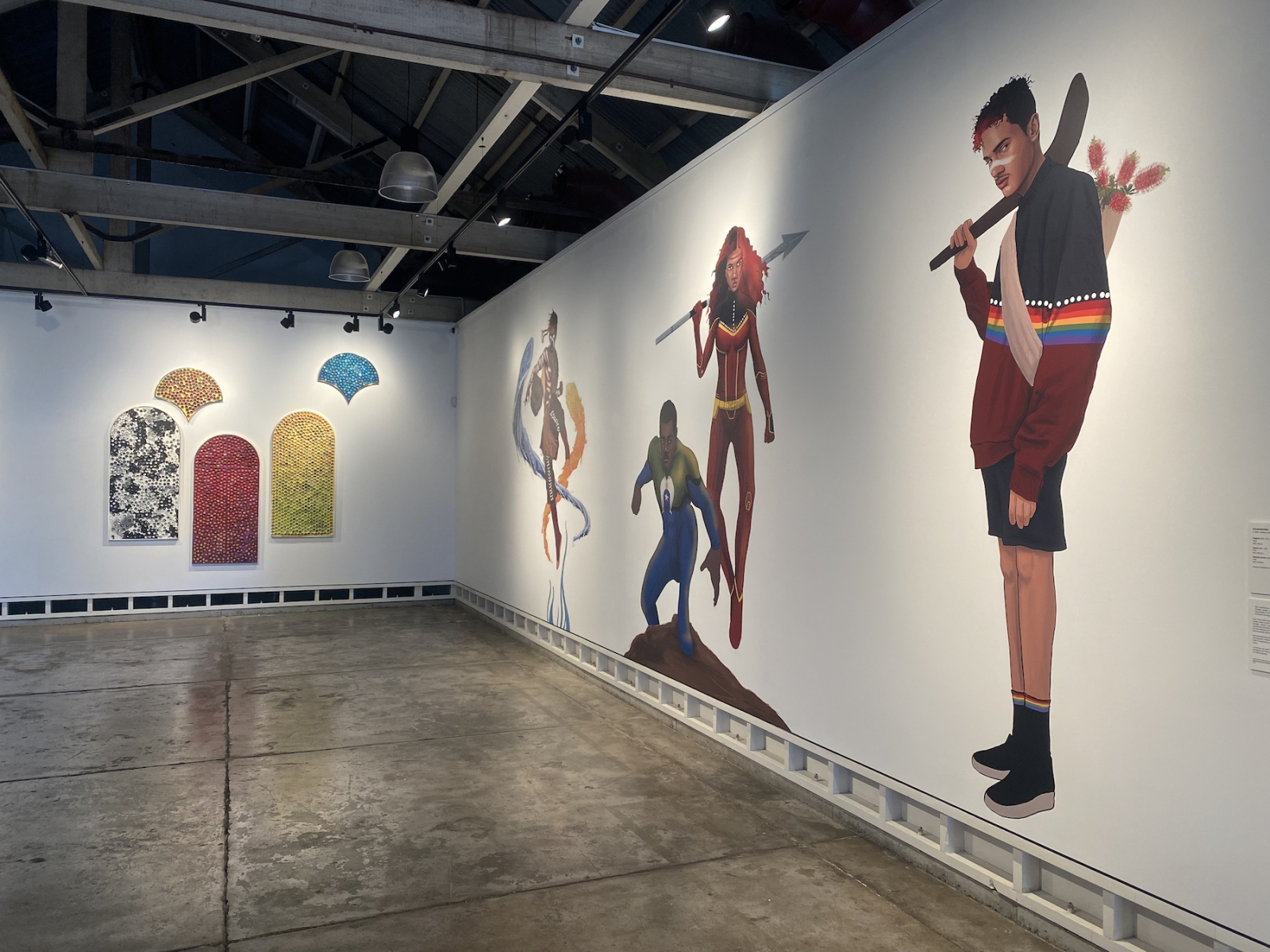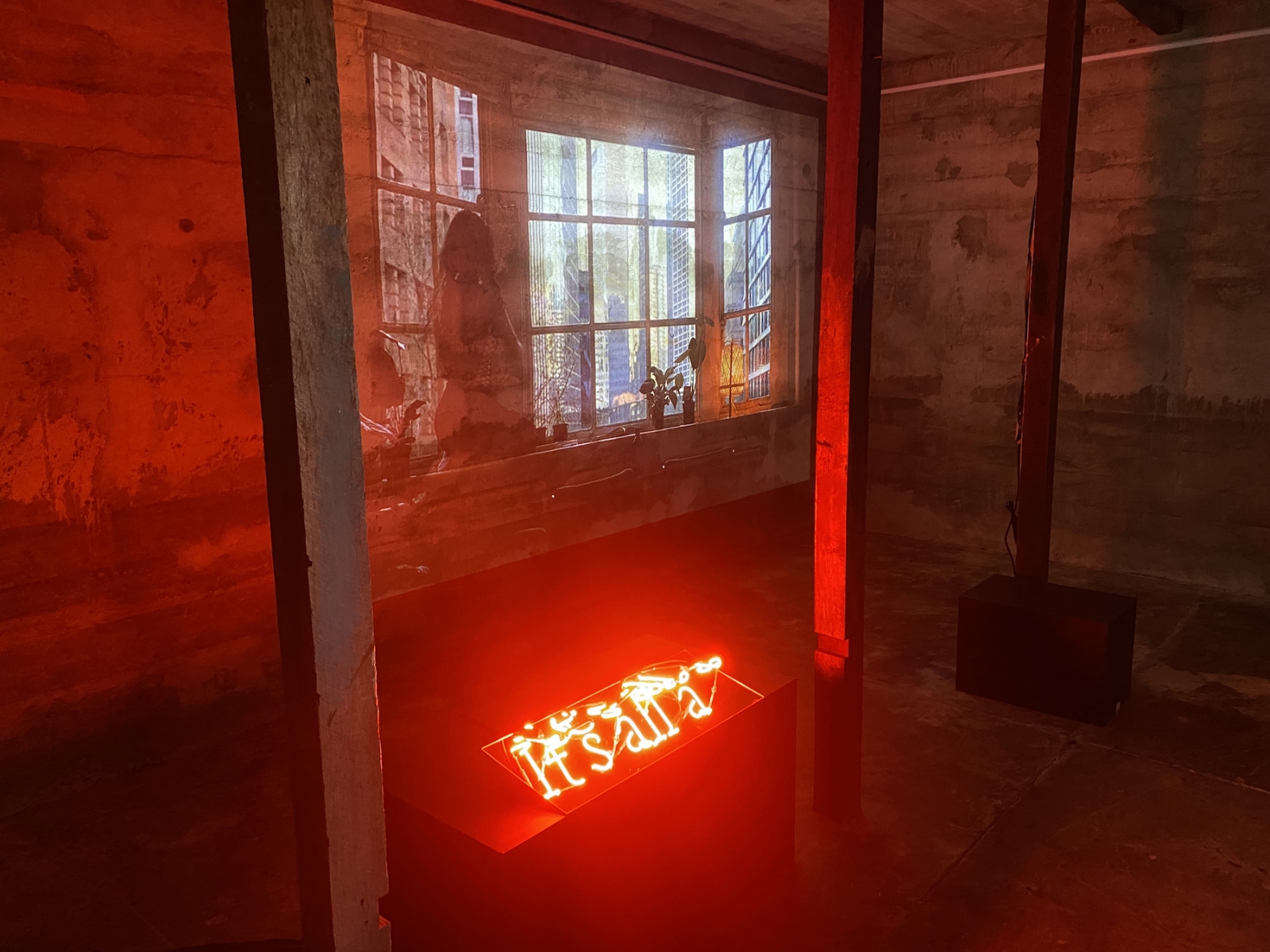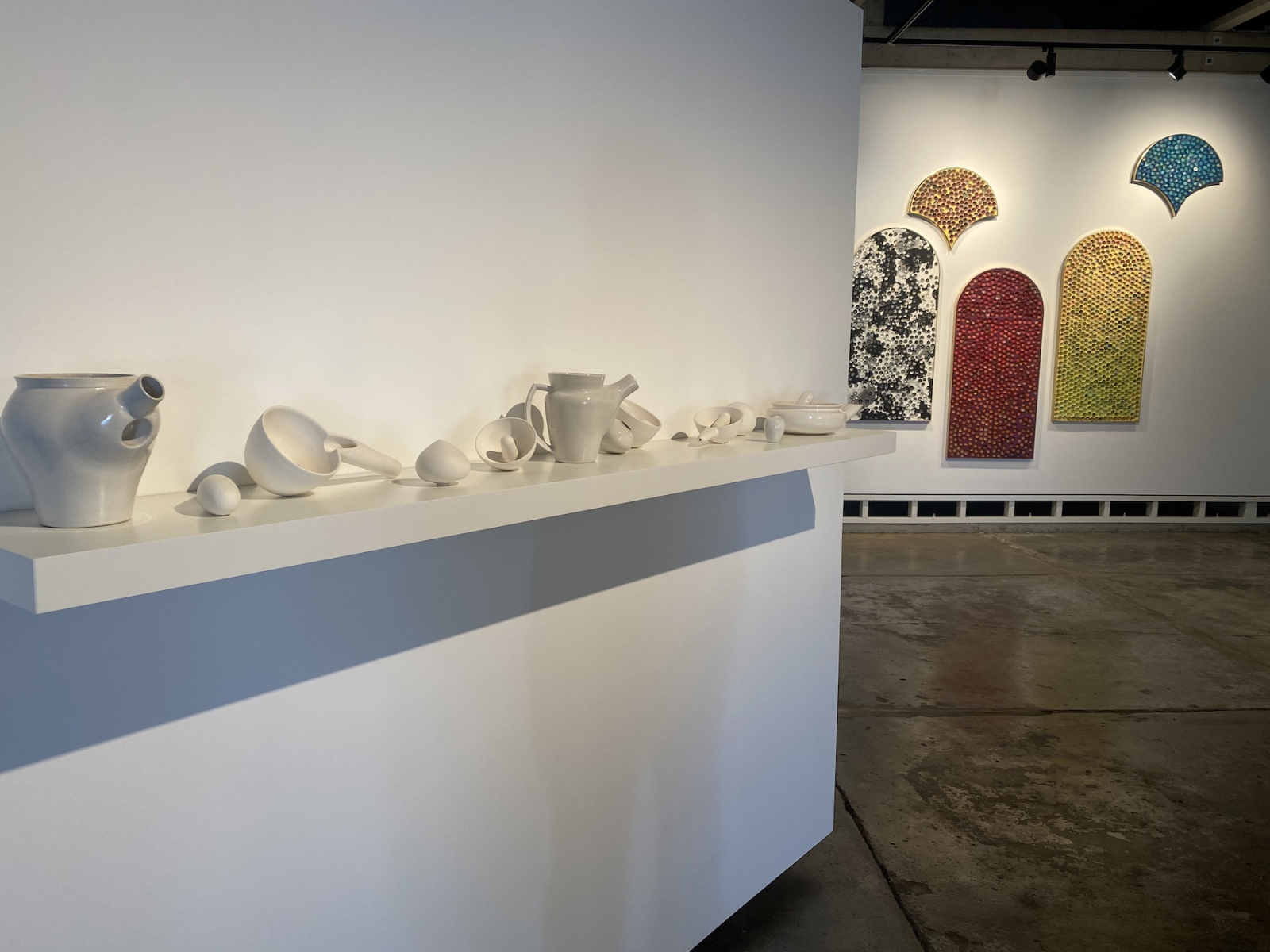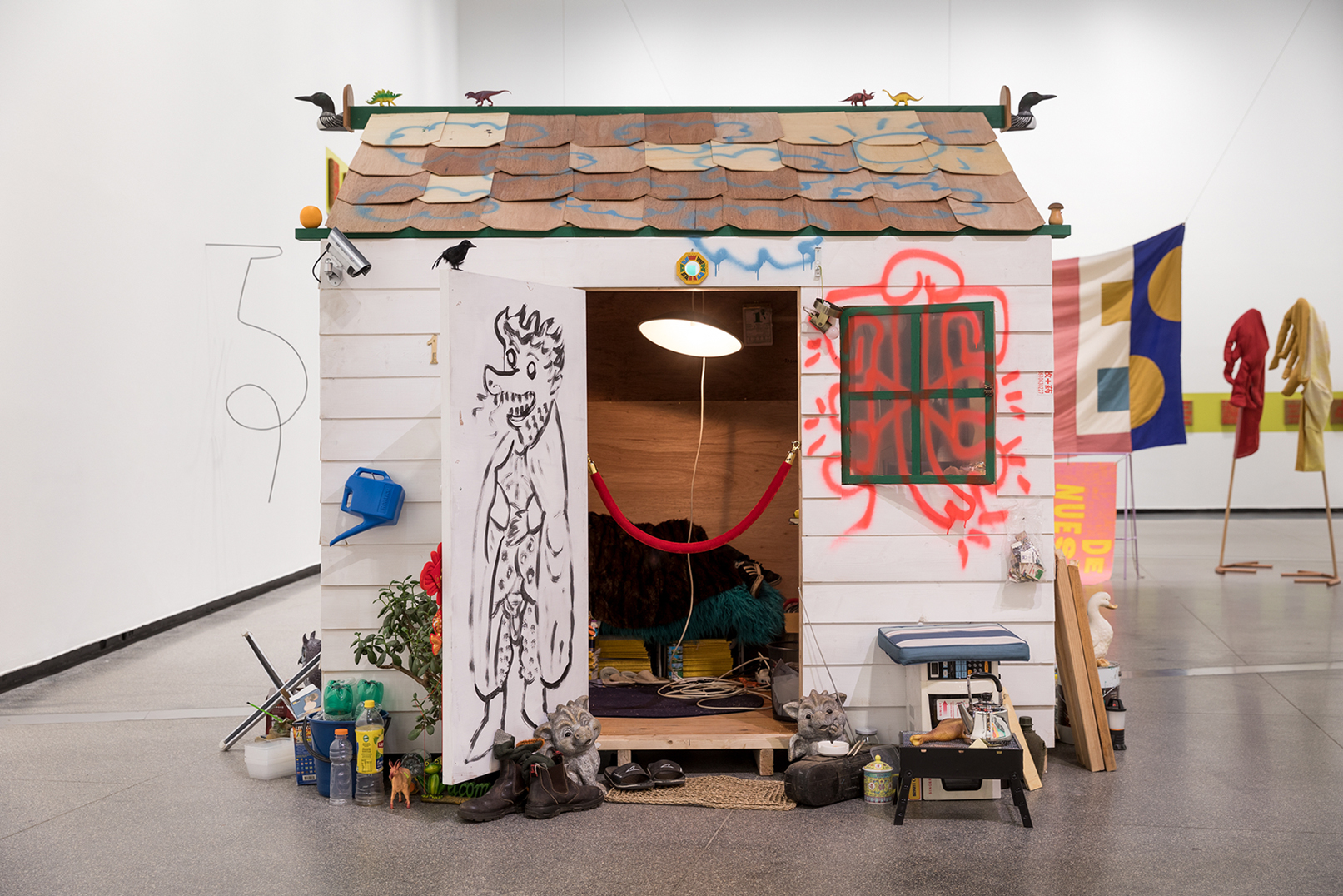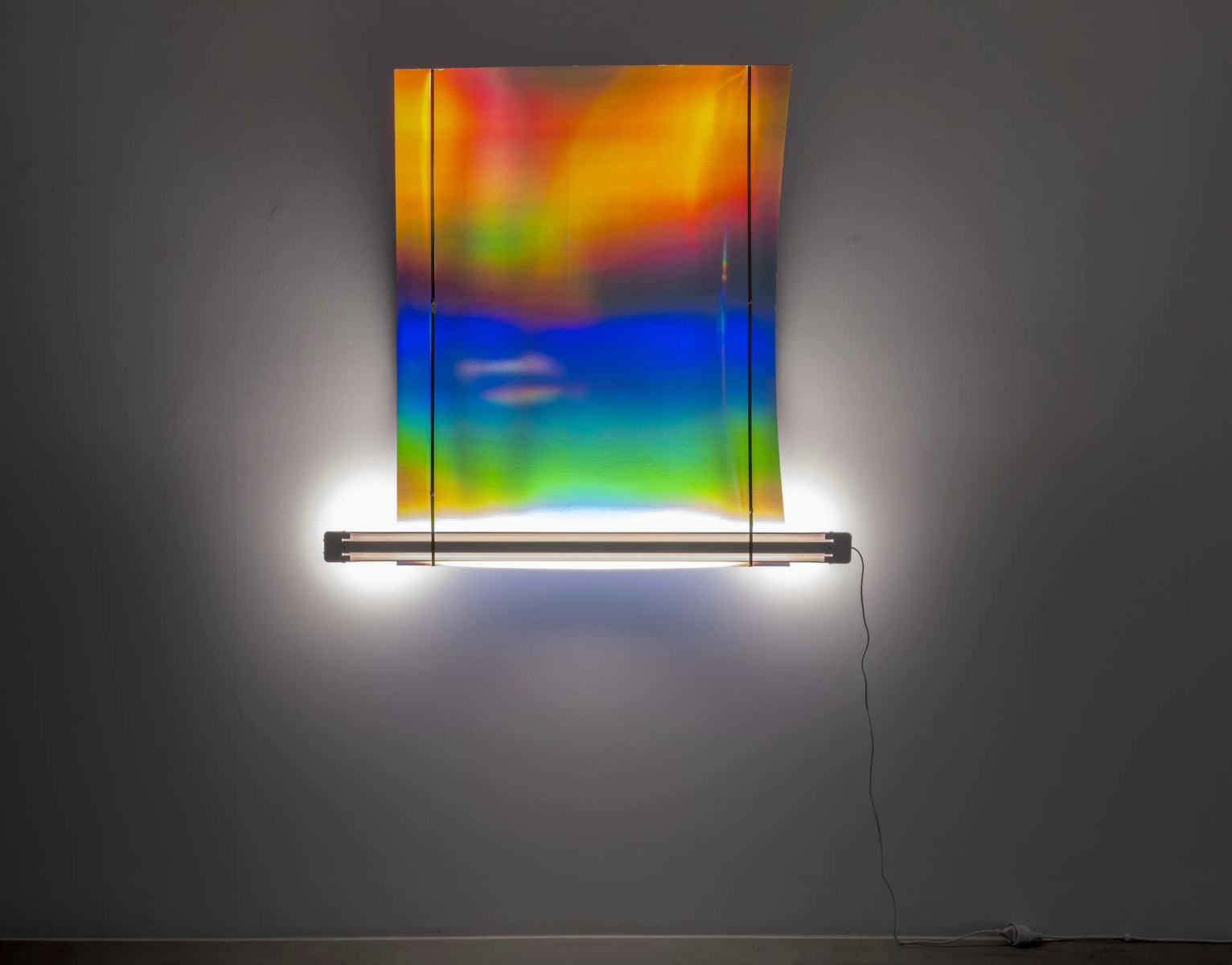What is the role of a regional gallery? Many of these spaces were started through grassroots campaigns by motivated locals who recognised the value of art in their lives, regardless of location. They are places where communities can come together, access artists, learn from and/or recognise themselves in art without having to travel to major metropolitan centres.
Things I want to say, currently showing at The Condensery, is an excellent example of what a regional gallery can do for its community. The idea for the exhibition came about when curator Rachel Arndt first arrived at the gallery in 2021. At that time, an exhibition by local high school students was on display. Across the works exhibited, there was a common theme of young people coming to terms with their identity and place in the world. With co-curator Imogen Dixon-Smith, Arndt wanted to continue this conversation with young people in the region, creating an exhibition that reassures and affirms the experiences of young locals.
Identity, in particular how it is being reconciled by young artists, is at the core of Things I want to say. This broad concept is succinctly brought together by Arndt and Dixon-Smith through works by Jordan Azcune, Tyza Hart, Dylan Mooney, Lucy Nguyễn-Hunt, Justine Youssef, and Gutiŋarra Yunupiŋu. The works are deeply personal reflections of navigating identity with attention to the artists’ lived experiences of queerness, disability, and First Nations and migrant culture.
On entering the Condensery, you are immediately drawn to four larger-than-life figures on the right wall by Dylan Mooney. Part of his Blak Superheroes series, three of the figures wear costumes, reminiscent of Marvel characters, with Aboriginal and Torres Strait Islander design motifs. Gallery guide Dawn shares with me that the far-right figure is a version of Mooney, adding himself to this community of powerful, resilient, and present characters. The sheer scale of these figures reinforces Mooney’s ongoing effort to amplify representation of First Nations people free from negative stereotypes, as main characters, not background voices. In addition, Mooney’s use of digital drawing as a medium, similar to a style found in comic books, is accessible to the younger audiences that this exhibition aims to connect with. These works are a clever inclusion in Things I want to say, they speak clearly to the intended audience, enabling them to be easily drawn into the conversations that Mooney presents.
Across from Mooney’s work is Tyza Hart’s Untitled Function series, a collection of stoneware and earthenware pieces. Three are placed on a low plinth on the floor and the remainder sit on a nearby wall shelf. The designs are deceptively simple and play with the tension between functional and non-functional form. Protruding shapes are partnered with deep indentations, subtle suggestions of human genitalia. The forms are inexplicable, they appear recognisable yet defy categorisation. Hart is best known for their portraiture work, which explores the artist’s relationship to their body, as well as their experience of the flexibility of gender and how this has played into their understanding of personal identity. By removing the physical body in Untitled Function, Hart presents a series of works that encourage viewers to consider the multitude of possibilities for gender identity without prescription. This is an effective means for young audiences to consider their own experiences of gender without boundaries; as Hart demonstrates: there are many ways to move through this world.
In The Condensery’s bomb shelter, Lucy Nguyễn-Hunt presents a new work from their ongoing series Things I can’t say. The series navigates the process of Nguyễn-Hunt coming out to their mother and the Vietnamese language’s lack of vocabulary to traverse these conversations. This new iteration is an installation that pairs a video with a mirror neon-piece reading: “it’s all a.” The video opens with Nguyễn-Hunt walking into the frame and kneeling next to an open window, looking out to the buildings and street below. After a minute or so, a second Nguyen-Hunt enters the room and sits at a table before the window. Both versions of the artist sit peacefully within the constant hum of the street. “hiểu lầm” (misunderstand), in a typeface reminiscent of neon signs found in Vietnamese cities, then floats over the screen. Partnered with the neon work, you wonder whether the video is a dream or maybe an alternate reality where Nguyễn-Hunt has had the difficult conversation, and their identity is out in the open. It is a poignant work that encourages reflection on how we reconcile our identity not just with ourselves but also our family and friends.
In the content it covers, this small show is surprisingly powerful. The artists speak to individual experiences of identity but also highlight the importance of community, be that inherited or found. The exhibition provides a space for conversation and reflection—for audiences to consider how they move through the world—in parallel with the experiences of the exhibiting artists. The exhibition is further partnered with a series of public programs that encourage young locals to continue their own explorations into identity. This seeks to ensure that their voices are heard, potentially creating new communities between them. Things I want to say is an effective conversation starter, creating space for young people in the Somerset region to further their own explorations into personal identity.
Things I want to say is also the final exhibition to open with Arndt as gallery curator. Under her direction, The Condensery has delivered ambitious and responsive exhibitions for the Somerset region. She has handled controversy with tenacity and grace and reminded many why regional galleries and their programs are key players in shaping community conversations. She leaves an important legacy and her departure will be felt by many in the local community, not to mention the wider arts sector.
Hannah Williamson is a curator who lives and works in Meanjin/Brisbane.

